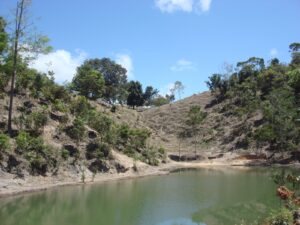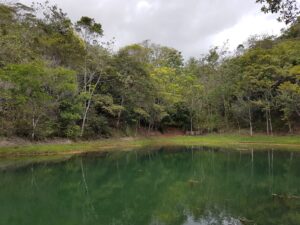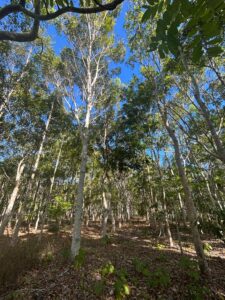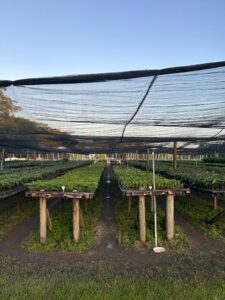In our quest to find businesses that grow in partnership with nature, few illustrate this possibility so well as Symbiosis.
Born fourteen years ago near Trancoso in the state of Bahia in Brazil, very close to where the Portugueses colonizers first set foot in Brazil, Symbiosis Investimentos is turning degraded cattle land into a mixed forestry system mostly based on native species, that were long harvested for their high quality wood, driving them close to extinction in nature.


I first visited their farm in 2019 when I decided to join as an investor, drowned by the long term strategy of high quality wood production, in a mixed system of species that support each other as they do in a forest, without losing the capacity to prune and harvest the trees.
The core strategy deployed in their farms is to rewild roughly 40% of the land, that will play a key role on delivering ecosystem services, specially around water reservoirs, and then manage the remaining 60% of planted forest in lines of different species. The key to the success of the more then 1000 hectares already implemented in three different farms is the selection of species, cloning the best individual, building an efficient tree nursery and testing on the field several designs that combine auxiliary exotic species, such as the African Mogni, with the natives, such as the local Jacaranda, with longer cycles that are at the core of the project.

Looking at the degraded pasture land of the next door farm and then walking through the lush forest and tasting the fresh water from the revitalized river from Symbiosis farm gives hope for a bright regenerative future for the region. It’s a remarkable example of men working with nature allowing the land to manifest its natural ecology with the right management intervention to gear it to a viable economic solution of nature based production of high quality wood and ecosystem services, including now carbon credits, but with even greater potential for biodiversity and water credits when the financial market moves beyond carbon.
On the social perspective the project builds on the tradition of silviculture that already thrives in the region for decades through the pulp industry and eucalyptus plantations. What symbiosis does is take silviculture to a new level of higher impact and profits. Now with a state of the art nursery facility, successfully tested designs of mix species and management, that allowed them to reduce the long cycle harvest from 14 years to between 8 and 12 depending on the species.

The next challenge is to plant 1000 new hectares per year with the potential of changing the landscape closer to the lush vision that Cabral and his comrades had when they first saw Mount Pascal more than 500 years ago and started the process of deforestation.

